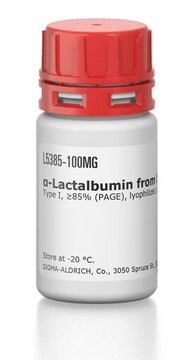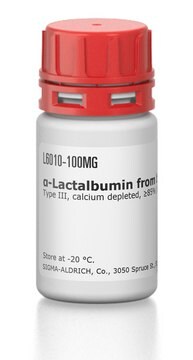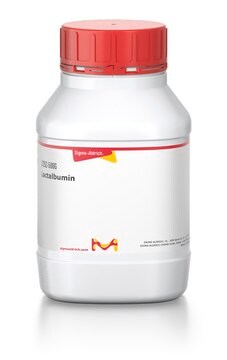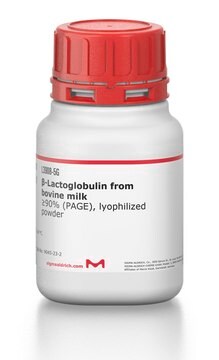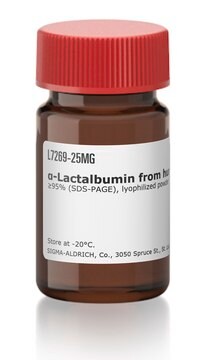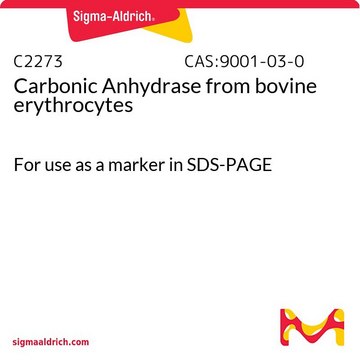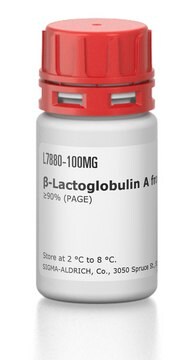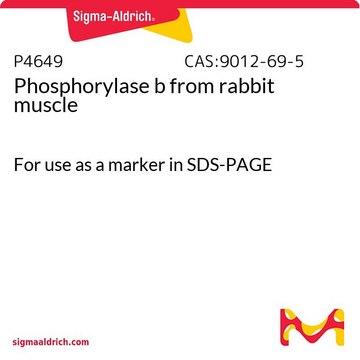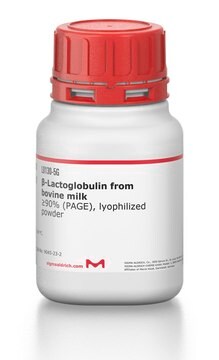L6385
α-Lactalbumin from bovine milk
For use as a marker in SDS-PAGE
Synonyme(s) :
alpha-lactalbumin
About This Item
Produits recommandés
Source biologique
bovine milk
Niveau de qualité
Forme
powder
Poids mol.
~14.2 kDa
Conditionnement
vial of 5 mg
Technique(s)
electrophoresis: suitable
Solubilité
H2O: soluble 10 mg/mL
Numéro d'accès UniProt
Température de stockage
2-8°C
Informations sur le gène
cow ... LALBA(281894)
Vous recherchez des produits similaires ? Visite Guide de comparaison des produits
Description générale
Application
- as an electrophoresis marker, with a molar mass of approximately 14,200Da
- in a study to investigate selective binding of proteins on charged surface iron oxide nanoparticles via reverse charge parity model
Actions biochimiques/physiologiques
Certificats d'analyse (COA)
Recherchez un Certificats d'analyse (COA) en saisissant le numéro de lot du produit. Les numéros de lot figurent sur l'étiquette du produit après les mots "Lot" ou "Batch".
Déjà en possession de ce produit ?
Retrouvez la documentation relative aux produits que vous avez récemment achetés dans la Bibliothèque de documents.
Les clients ont également consulté
Notre équipe de scientifiques dispose d'une expérience dans tous les secteurs de la recherche, notamment en sciences de la vie, science des matériaux, synthèse chimique, chromatographie, analyse et dans de nombreux autres domaines..
Contacter notre Service technique